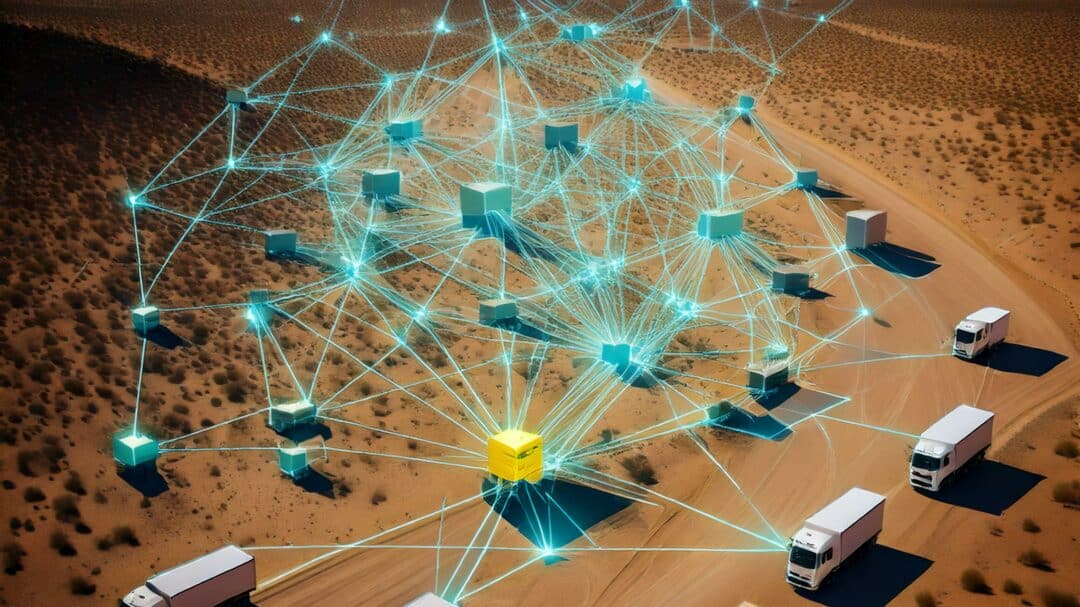
This is the first in a series of technical posts about how Track & Trust works at a component level. To start, we’ll outline how our mesh network technology works in this post. Additionally, I’ll provide quick navigation links to the follow-up articles at the bottom of each article once the series is complete. For now, let’s jump in.

In the photo above we’re showcasing part of our fleet of mesh nodes. As you may recall, you may have seen them before in our recent post announcing that we passed our site acceptance tests with the European Space Agency. Our mesh nodes contain a lot inside. So, what kind of communications superpowers do they possess?
What’s mesh network technology ?
Mesh network technology can be a bit confusing but we’ll demystify the jargon. These black boxes are “mesh nodes,” which in our case means they can communicate with one another using wifi-direct. We also use this protocol to send data from Android phones directly to the nodes without a need for any additional gateways nor internet connectivity.
Why wifi-direct?
We chose wifi-direct because it’s really fast. In fact, nodes can detect one another and negotiate a wireless data connection even at highway speeds. Furthermore, they can do this with only a brief moment of communication.
We serve our application directly from the mesh node to a logistics employee’s phone using wifi-direct. This is useful because we don’t need an internet connection. Afterall we designed the system to cope with the worst conditions imaginable – and lack of network connectivity is where that starts.
Layer 1: Cellmesh Layer
Our partners at Weaver Labs contributed their cellmesh software. Cellmesh controls automatic detection, negotiation, and handling of communication between nodes. Additionally, it continually searches for communication resources like 4G or satcom and routes data to our servers which ensures continuity of operations in adverse conditions.
Layer 2: Mesh Node Layer
Datarella built a software layer on top of the lower-level networking technology from Weaver Labs. Consequently, we call this layer the Mesh Node layer. It has several big jobs:
- Manage data piped into cellmesh from user interactions
- Manage incoming data from cellmesh originating from other nodes
- Maintain efficient data replication between nodes
- Manage deletion of data already posted to the backend
In addition, the Mesh Node layer prevents our data pipelines from growing too large with redundant data. Together, the cellmesh and Mesh Node layers enable individual mesh nodes to connect with one another seamlessly. These nodes automatically authenticate their identities cryptographically and freely pass authenticated data back and forth. Nodes can also post this data directly to our backend servers.

In the image, the blue boxes represent nodes. The boxes provide service continuity for users in the field who want to post information like deliveries, pickups, damage, delays, and more. Sometimes they’re connected to one another but not always. Every box has two 4G cellular antennas and continuously searches for an exit to our Track & Trust cloud.
Patient and Resilient Mesh Network Technology
Our boxes are patient. If they’re offline, they wait until they’re online to post data. Alternatively, if they can’t do that, they wait for another node to come along. When connected, they play a game of telephone. For instance, if one node receives a message from another, it queues that message to pass along when it meets another box.
As we add more nodes to the system, it becomes more resilient. Meanwhile, our cellmesh and mesh node services mean that rollout is zero-configuration. Therefore, we simply plug the nodes into the trucks, and they start communicating with one another and the internet. They serve up mobile interfaces for drivers and warehouse workers to provide the most up-to-date information about what’s happening in the field.
Whenever a node connects with the cloud, it shares everything it knows. Moreover, it tells its “colleagues” which messages it successfully passed on. As a result, this allows them to forget information that they know a “colleague” node has already posted. This is technically known as a “gossip protocol” and it’s at the heart of how our Mesh Network Technology manages the information lifecycle.
In the next post, we’ll explore what happens if 4G isn’t working for some reason. There, we’ll discuss how satellite communications come into play as well as the critical role that GNSS plays.
